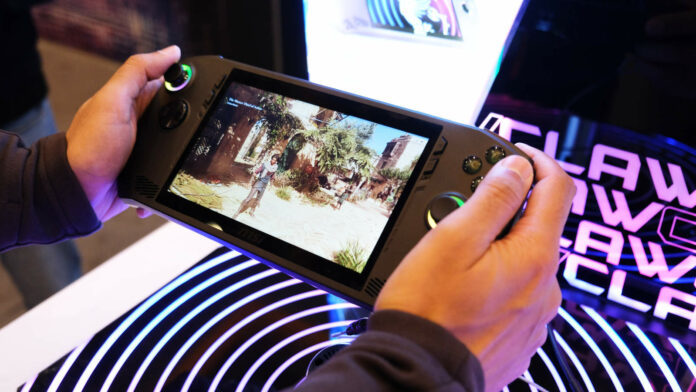MSI Claw reviews are doing the rounds, and unfortunately, it’s worse than we expected. We already knew the lofty price tag was a bit bonkers, but it turns out Intel’s Meteor Lake falls short of Steam Deck, Asus ROG Ally, and just about every other handheld out there. This begs the question: why go with this specific Intel chip?
Back when Core Ultra 5 and 7 launched, Intel said to expect around 2.5x better efficiency for your laptop. These claims don’t translate very well to gaming, as MSI Claw is a bit of a guzzler. On one hand, adjusting the TDP is a lot more accurate to the total system power draw, which is something AMD struggles with. On the other, Core Ultra 7 demands 7.3W to do absolutely nothing.
YouTuber The Phawx tested idle power draw with brightness at 50% and features like MSI Mystic Light RGB and noise cancellation turned off. He explains that this is 2W more than GPD Win Max 2 with AMD Ryzen 7 8840U, which has a larger 10in screen. Those 2W translate up to three hours of extra battery life.
It’s not much better when it comes to gaming, either. Using Doom Eternal as a benchmark, MSI Claw once again loses out. It needs 10W more to hit the same average 70fps as Steam Deck OLED. Asus ROG Ally even fares better, requiring 4W less power for the same performance.
I still can’t speak to why the top MSI Claw retails at $800, even with 1TB of storage. It carries a huge premium over the $649 / £569 Steam Deck and even the $697 Asus ROG Ally. According to Moore’s Law Is Dead, though, Intel gave MSI an incredible deal to use Core Ultra chips.
“I’m basically told that MSI got Meteor Lake chips for free if it put them in the Claw,” the YouTuber says in his 250th episode of the Broken Silicon podcast. “Intel bought this because AMD is in the Steam Deck, ROG Ally…it’s popping up in everything now. Nvidia’s about to have a Switch 2. Intel bankrolled this so it can say it has its own handheld.”
Of course, this isn’t forgetting the Tiger Lake-powered portables, which were pioneered by the likes of OneXPlayer. Intel obviously wanted a more Western-friendly brand that isn’t limited by the confines of crowdfunding to be seen as a serious player.
If it wasn’t for free, Intel almost certainly offered the chips at a “significantly reduced cost,” according to the YouTuber. Moore’s Law Is Dead has a great track record for insider information, and it makes a good deal of sense. It’s a shame, really. The device felt great to hold at CES 2024. Here’s hoping next-gen Intel handhelds live up to the hype.

